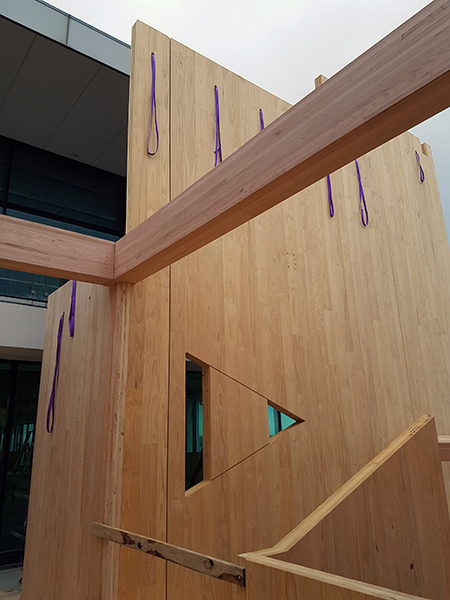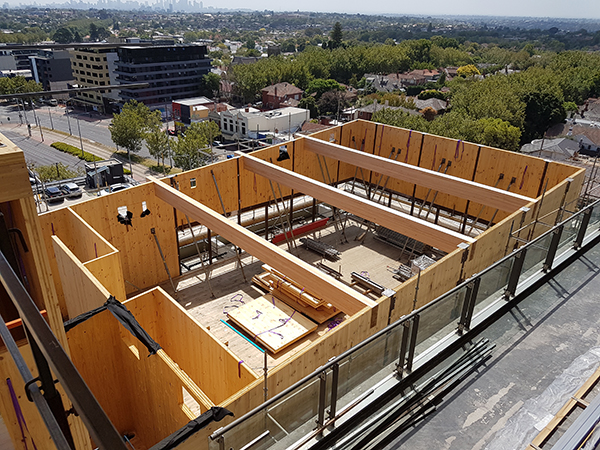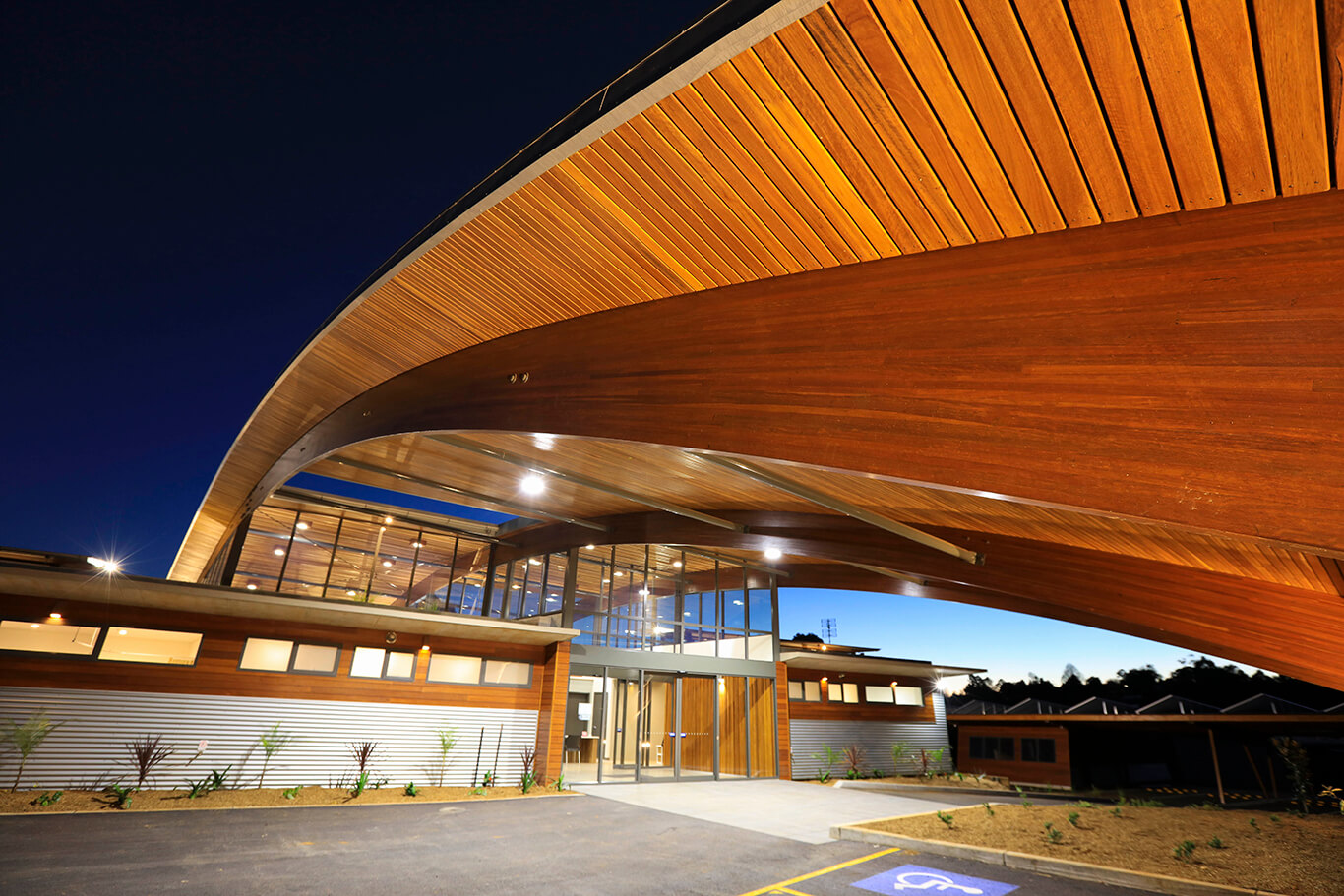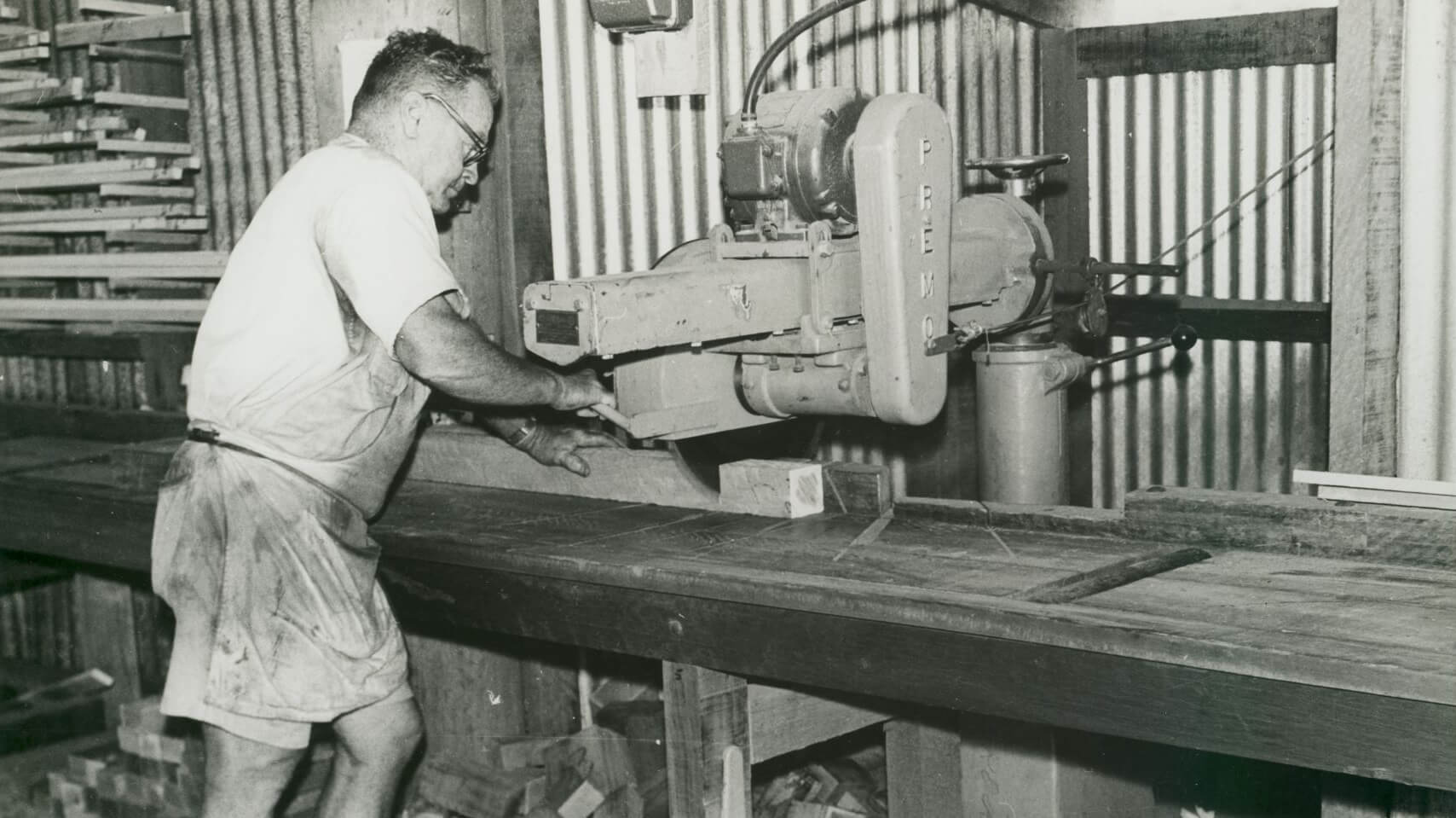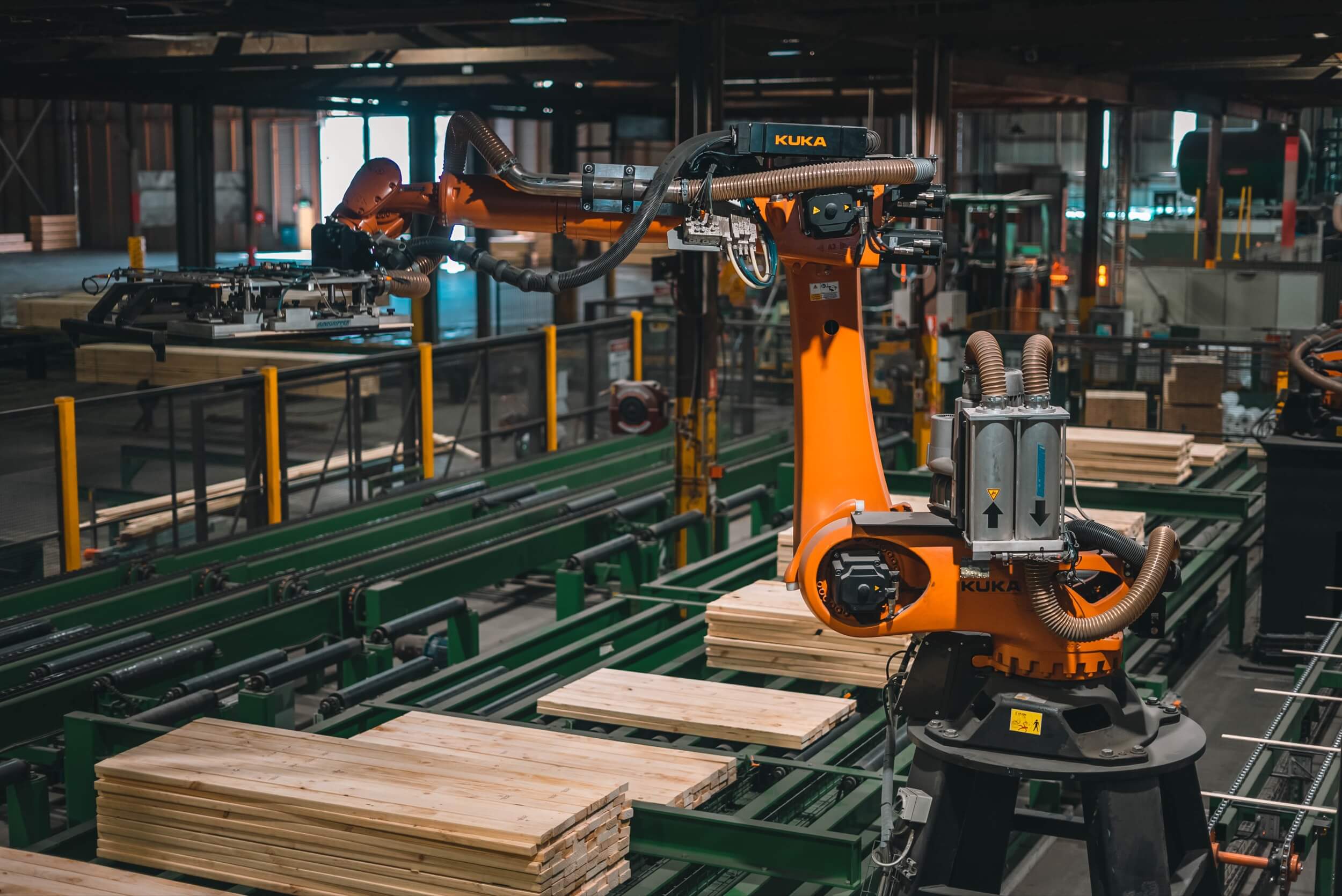As the world becomes increasingly conscious of climate change and the environment, the construction industry - who are responsible for the largest portion of Australia's total carbon emissions - are responding through the use of more natural and sustainable building materials.
Glue Laminated Timber (GLT or glulam) and Laminated Veneer Lumber (LVL) have been available in Australia for decades and more recently, the market has seen the rise of Cross Laminated Timber (CLT). These products fall under the umbrella of Engineered Wood Products (EWP). EWP's offer an environmentally superior alternative to traditional building materials like steel and concrete. One of the most important benefits is timber's ability to sequester carbon and store it. For example, if we can replace a cubic metre of concrete with a cubic metre of timber, about a tonne (1,000 kilograms) of CO2 emissions is reduced from the atmosphere.
In order to understand the differences and benefits between GLT and CLT, let's take a closer look at these products.
The differences
In GLT, laminates of structural timber are layered and glued in the same direction, on top of each other. This gives the product increased strength primarily in a structural beam or column configuration. GLT can be curved and produced in a variety of shapes, sizes and profiles. Thanks to the natural and warm appearance of timber, GLT is often used as a visually expressed structural support in beam, column, roof truss, portal frame and bridge applications.
CLT is manufactured in a similar way to GLT, except that each layer of timber is glued at 90 degrees to the layer above and below, giving the product strength in both directions. CLT is a 'whole of structure' building solution, with similar characteristics to that of a pre-cast concrete panel. Accordingly, CLT panels are often used for box-framed structures where whole wall, floor and roof systems are constructed. CLT can be manufactured to a range of visual appearance grades.

The benefits
GLT and CLT are both natural wood products that share many advantages:
- Fire and seismic performance - Timber is a combustible material, however, it burns in a slow and highly predictable way. GLT and CLT will not twist or spall in a fire event thanks to their unique charring properties. The self-protecting nature of the charring layer increases the likelihood of a timber structure surviving fire as the uncharred inner core remains unaffected, maintaining its structural strength and stability. When designed for fire performance in accordance with AS1720.4, GLT and CLT are fire engineered to perform as required. In a seismic environment, GLT and CLT have excellent [earthquake resilience](https://www.thinkwood.com/performance/seismic-stability).
- Natural insulator - Timber is a naturally insulating material that creates a barrier between heat and cold. Its secret is in the many air pockets within the cellular structure of timber, meaning that thermal conductivity increases with species density. CLT buildings offer an additional thermal benefit in that the precise nature of the manufacturing process means that there is very little air leakage within the building envelope.
- Excellent strength to weight ratio - Engineered timber is lighter in weight than steel or concrete. Its strength-to-weight ratio is approximatively 20% higher than steel and 4 to 5 times higher than non-reinforced concrete.
- Consistency of performance - Engineered wood products are manufactured to meet specific performance criteria. The manufacturing of GLT and CLT products provides the best solution for an engineered building material.
- A sustainable material - The process of manufacturing GLT and CLT uses substantially less fossil fuel energy per unit volume than steel, concrete or aluminium, meaning that timber has an ultra-low carbon footprint. In addition, approximately half of the dry weight of timber is carbon, taken from the atmosphere and replaced with life sustaining oxygen, and stored for the life of the tree and subsequent manufacturing process. Chain of Custody certification is important to ensure the products have been sourced from sustainable resources.
- Prefabrication - GLT beams or columns and CLT floors or walls can be fully manufactured and prefabricated before reaching the job site, enabling quick and easy installation as well as a reported 25 - 30% improvement in on-site project time savings, thus substantial cost savings.
- Durability - Timber species, glues, treatments and applications are all factors in the durability outcomes of GLT and CLT. Perhaps surprisingly, they can tolerate aggressive environments better than many other construction materials. For example, GLT is ideal for corrosive environments with high humidity or chlorine salt levels such as indoor swimming facilities and coastal locations. The key factor in the longevity of a timber structure is sound design and detailing processes to manage moisture changes.
- Good for the body and brain - Numerous studies have shown that being surrounded by natural materials at home, work or school has positive effects our health and wellbeing. A recent report commissioned by Planet Ark has found that exposure to timber products created similar health benefits to those created by spending time in nature. When used well, timber creates buildings that combine many of the key aspects of nature connected design including natural light, air flow and views of natural elements. It can also be used to reflect the shapes and patterns seen in nature, also known as biomorphism.
Designing with GLT is flexible because it can be produced in a variety of sizes, shapes, profiles and curvatures. On the other hand, while CLT is more static, the thickness of the panels can be increased by simply adding more layers, and the length of the panels can be increased by joining panels together. Both GLT and CLT are engineered solutions, and practical design advice is readily available to provide peace-of-mind throughout the design and construction stages.
The perfect combination
The manufacturing process is the main differentiator between GLT and CLT; with GLT known as 'the sustainable alternative to steel', and CLT the 'sustainable alternative to concrete'.
In a tall building system, GLT can be used in beams, columns and roof trusses while CLT can be used for floors, walls, roofs and stairs. The 2019 National Construction Code has increased the use of fire-protected timber construction systems in buildings up to an effective height of 25 metres. This includes schools, retail premises, hospitals and aged care facilities in addition to the previously approved multi-residential, hospitality, accommodation and office building types.
The combination of GLT and CLT is making the construction of entire buildings from timber a reality, and is significantly reducing carbon emissions in the construction industry.
Use of Hyne Timber's GLT and Xlam's CLT in education and residential projects:
- Monash University Building - Architect NH Architecture
- Residential house in Ceres, VIC - Architect: level-ak




